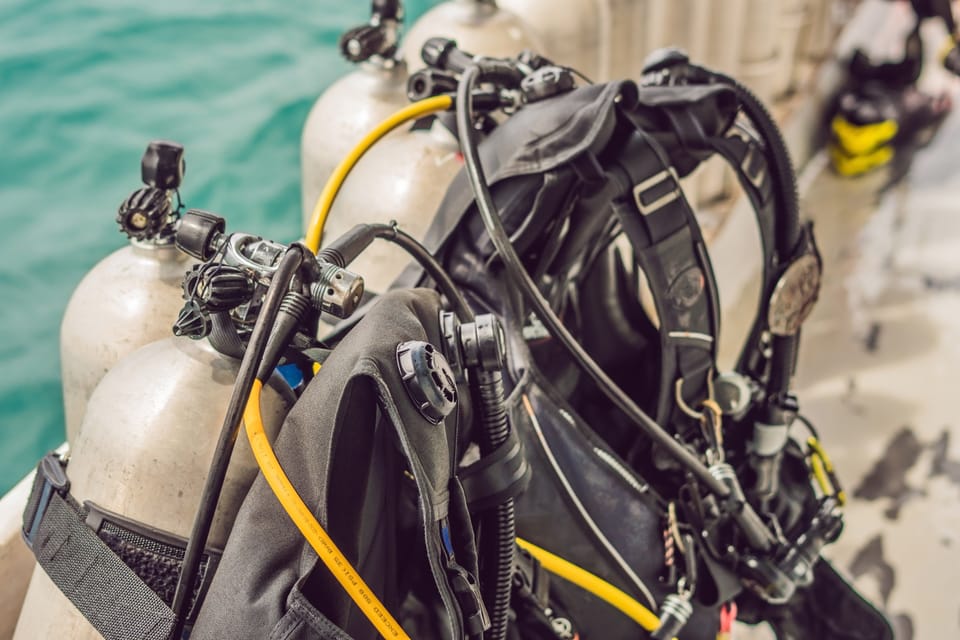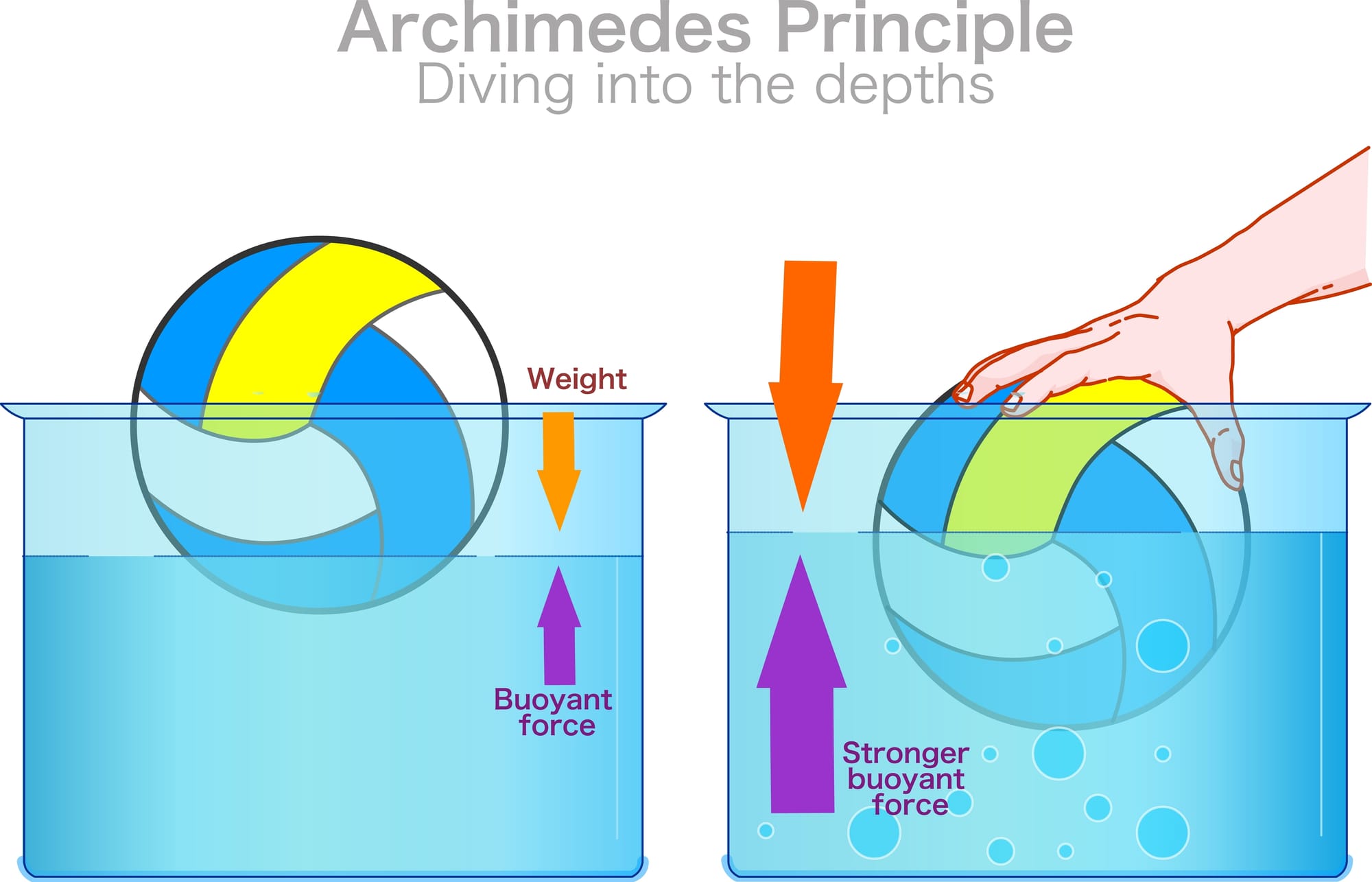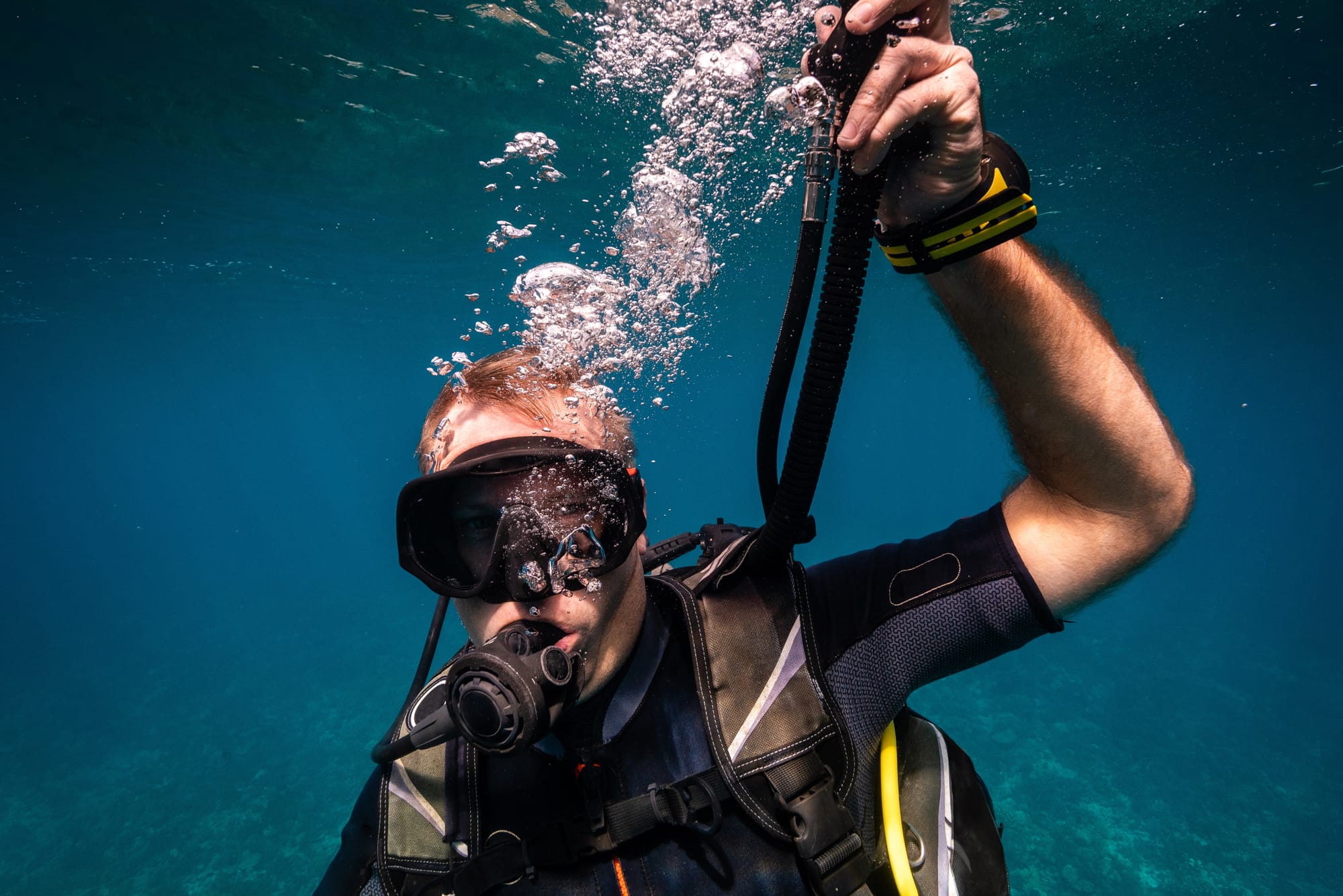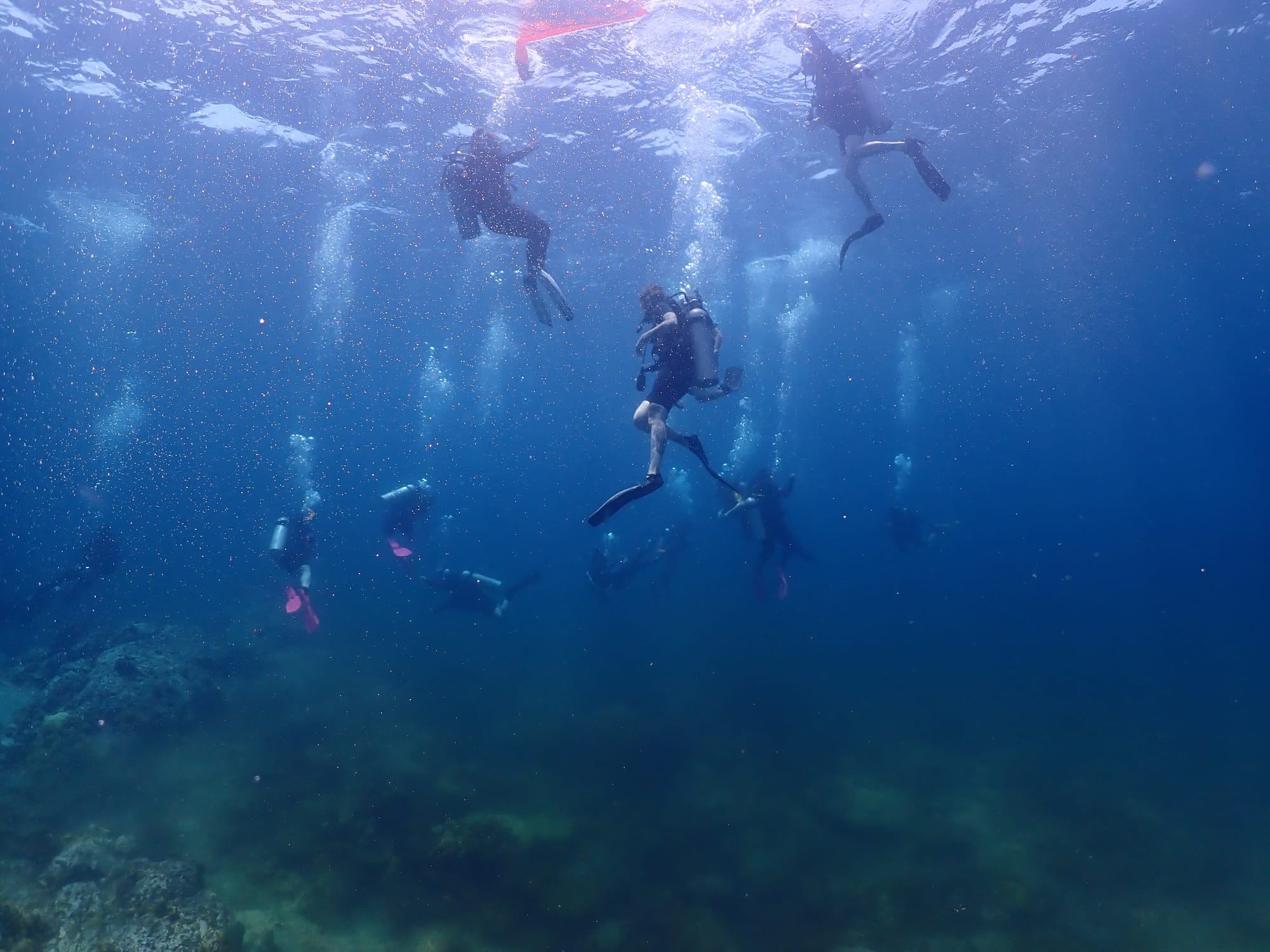Buoyancy Control Device (BCD): Everything you need to know

Table of Contents
What is a BCD?
A BCD (standing for Buoyancy Control Device), also sometimes called a BC (standing for Buoyancy Compensator), is the main device used in scuba diving to control your buoyancy. The BCD is worn like a jacket and is strapped to the scuba tank: it holds the tank and the regulator together, and keeps them close to you! A BCD, although they come under many different types and forms (as we'll see later) are usually made up of:
- A bladder that can hold air and can be inflated or deflated using the inflator hose. The bladder is the main component of the BCD that will add or reduce volume to your profile (and, by consequence, will make you more positively or negatively buoyant).
- An inflator hose, connected to the bladder and the scuba tank. There are usually two buttons on the hose: one used to inflate the bladder, and one to deflate it. Although to inflate the bladder, the hose can be in any position (as it is high-pressure air coming into the bladder), when you deflate the bladder using the hose, it should be positioned as far up as possible, to facilitate the escape of the air. The hose also has a hole to let the air exit during deflation: this hole can also be used to orally inflate the bladder if the inflating button fails (The exact technique is detailed later on, in the section on "How to use your BCD")
- A solid backplate: although more common in wing-type BCDs, they can also be found in traditional jacket-style BCDs. The backplate, as the name suggests, sits on your back, providing support for all the weight from the tank and the rest of the equipment.
- Straps (or webbing) are used to fit and adjust the BCD to your size. They are connected to the backplate in a wing and directly to the bladder in a jacket-style BCD.
- There are dump valves to release air (in an alternative way from the inflator hose). The dump valves can be useful in a scenario where the diver has a dump valve higher than the inflator hose to facilitate the deflation of the BCD: for example, if the diver is attempting to swim down, with their legs up, it would be easier to release air using the lower dump valve than using the inflator hose.
If you're interested in learning more about the equipment scuba divers use, check out this article, which talks about all the equipment pieces.
Understanding Buoyancy
To understand how to use the BCD properly, we'll first need to talk about how buoyancy works: The easy explanation is that an object denser than water will sink in water, while an object less dense than water will float in water. Inflating your BCD makes you "less dense", which makes you float, while deflating your BCD makes you "more dense", which makes you sink!
The longer explanation involves Archimedes' principle, which states that: The buoyant force exerted on an object in a liquid is equal to the weight of the displaced liquid. Intuitively, this means that the water moved by the object tries to "push" the object upwards. For example, if you tried to drag an empty bottle with a volume of 1L underwater, this bottle would displace 1L of water; 1L of water weighs 1kg, and therefore, there would be an upwards force equivalent to 1kg pushing the bottle back to the surface. (Although it is scientifically inaccurate, we will describe here the buoyant force in Kg instead of Newtons, for the sake of simplicity). Now, if we have a BCD full of air, we can imagine that there is a larger total volume, which keeps us afloat.
When an object is submerged, the weight of the object opposes the buoyant force. We can distinguish three types of Buoyancy:
- Positive Buoyancy: An object is positively buoyant if the buoyant force is greater than the weight of the object. For example, a diver with a fully inflated BCD is positively buoyant.
- Neutral Buoyancy: An object is neutrally buoyant if the buoyant force and the weight of the object are equal. An example of a neutrally buoyant object is a submarine at depth!
- Negative Buoyancy: An object is negatively buoyant if the weight of the object is greater than its buoyant force. For example, if a diver completely deflates his BCD, he will become negatively buoyant.

Types of BCD
There are multiple categories of BCD for different kinds of uses, and even more subcategories. But before diverging into all the details, let's first cover the most common ones:
- The jacket-style BCD is likely the most used type of BCD. It is popular for its ease of use. Its principal advantage is its wearability, being simply worn like a jacket. The newer versions are often found with integrated weight pockets, although non-integrated weight pockets (requiring the diver to wear a separate weight belt) are still common. An appreciated feature for this type of BCD is its side-pockets, useful for storing items such as spare masks, gloves, wetnotes, etc... We recommend novice divers to start diving in the jacket configuration for its ease-of-use.
- The wing is the main variant of the jacket-style BCD. A wing is distinguished by its singular bladder, sitting on the back of the diver. The bladder is directly attached to the backplate, and there is a webbing entwined in the backplate. The wing is preferred for advanced divers as it gives better control over the trim and buoyancy.

- A twinset BCD is a larger wing made to accommodate two tanks on its back. Instead of straps, divers attach the tanks to the twinset BCD by screwing them to the backplate, and therefore, setting up a twinset SCUBA unit requires slightly more "handiness". As redundancy is important for technical divers, some twinset wings have a redundant bladder (meaning a second internal bladder if the first one fails). A twinset should only be used by divers trained for it.
- A sidemount harness is slightly more complex than the rest and also requires specialized training to use: the basic system consists of a bladder, a harness with D-rings and bungees to accommodate one tank on each side of the diver. Some sidemount systems can also have a redundant bladder.
- Other buoyancy devices: Other non-BCD devices can be used as buoyancy devices; the most common one is the drysuit, which can be inflated and used as a redundant buoyancy device. Another used piece of equipment is the lift bag, whose primary purpose is to lift and recover sunken items, but it can and is used as a buoyancy device for divers if their BCD fails.
How to choose your BCD
Choosing which BCD is for you will mainly depend on what kind of configuration you are planning to dive in. If you are planning to dive in a single backmount tank (the most common way of diving), your choice will be between the traditional, jacket-style BCD and the wing. If you are starting out, the jacket might be a more affordable and easier option. However, if you are serious about improving your trim and buoyancy, we strongly recommend buying a wing, as it will give you greater control over it.
A factor that might be important for some divers is the ease of transport of the BCD. Jackets are slightly bulkier than wings, and if you want to travel, we strongly recommend getting a wing with an Aluminum or Carbon Backplate, as they are very light and flat, meaning they are easy to stash in a suitcase.
If you like having pockets to store small accessories and items during your dive, a jacket will be more to your liking. To store items using a wing, divers use double-ender clips that can be attached to D-rings found over the webbing.
Another important factor to take into account is the volume of the bladder. Although we talk about volume, the term used by divers is lift capacity. For example, a bladder might have a lift capacity of 20lbs/9kg (which would equate to a volume of around 9 Liters). The bigger you are and the more weight you need, the more lift capacity will be required. Of course, the environment (salt water or fresh water) combined with the equipment (which diving suit you are using, Steel vs. Aluminum tank, etc...) will all affect the requirement for the lift capacity. Some twinset wings have a lift capacity as high as 50kgs!
How to use your BCD
Using a BCD properly is easy to understand, but can be tricky to master. To start, as a diver, you have two main ways to control your BCD:
- The inflator hose allows the diver to inflate and deflate the bladder inside the jacket. The inflator hose is connected to the tank via a low-pressure hose and can be inflated using a button (sometimes called the "inflate button"). There is also another button (the "deflate button") which is used to release air from the bladder and deflate it. Although inflating the BCD is easy and can be done with the inflator hose in any position, deflating the BCD is different: as air tries to go to the highest point to escape, the diver should always position the hose as high as possible to deflate their BCD. It is also possible to inflate the BCD orally from the inflator hose; to do that, simply exhale in the hole on top of the inflator hose while holding down the deflate button (be sure to release the deflate button when you stop exhaling, otherwise the air you just blew into the bladder will escape!).

- Dump Valves can be found in different spots of the BCD depending on the model used. They are used for quickly releasing air from the bladder: the diver can pull a small string, allowing air to escape from the bladder. It is common for dump valves to be present on the lower portion of the BCD/wing, in case a diver finds himself upside-down and needs to release air fast. Some BCDs also have a dump valve located on the shoulder/upper part, which can be an easy alternative to using the inflator hose to deflate. The diver must be careful, as using a dump valve releases a large amount of air and can lead to an uncontrolled descent if used excessively.
A full BCD will make you float while an empty BCD will make you sink; the whole idea behind controlling your buoyancy is finding the point where the BCD is inflated with the proper amount of air so that you become neutrally buoyant (if you are neutrally buoyant, you will be able to control your buoyancy with you breath!). The key to using a BCD while diving lies in the name: it compensates. A BCD shouldn't be inflated to go up and deflated to go down (except when the dive starts and you need to deflate for descent):
- When you descend, the air present in your BCD, lungs (and even micro-bubbles in your wetsuit or drysuit if you are using one) gets compressed, which makes you more negatively buoyant (i.e., you sink). Being more negatively buoyant makes you sink faster, which compresses your air spaces even more, which loops back to making you more negatively buoyant, which becomes an endless cycle of going down faster and faster. To compensate for that, you should slowly add air into your BCD as you descend, to control the descent. The keyword, however, is slowly, as adding too much air at once will make you too positively buoyant and send you back to the surface!
- Conversely, when you ascend, the air present in your BCD, lungs, etc... will expand, making you more positively buoyant. If you become more positively buoyant, you will start ascending faster, which makes your air spaces expand even more. Once again, this creates a cycle that leads to an uncontrolled ascent. To compensate for that, you should slowly deflate your BCD as you ascend, to maintain a controlled ascent.

Although to get back to the surface, you should slowly deflate your BCD/wing to make sure you don't go up too fast, once you do find yourself on the surface, fully inflate the BCD/wing for it to act as a lifejacket and keep you on the surface!
Price range
- Entry-level BCDs can be found starting at 300€. They are a good choice for new divers as they are basic and simple to use. Entry-Level BCDs are usually without integrated weight pockets, requiring divers to use a weightbelt. They are often used as the rental models for many dive shop/centers due to their cheap nature.
- Medium-range BCD can be found between 400€ and 600€. They usually come with integrated weight pockets, a comfort option for the backrest and extra options. They are a great choice for confirmed divers.
- High-range BCDs can be found for as cheap as 600-700€, but some can be as high as 1000€. High-end BCDs are sleekly designed, comfortable, and have multiple extra options (integrated pockets, back handle, comfortable straps, multiple d-rings, etc...). They are the best choice for experienced divers who want to feel as comfortable as possible with their equipment.
- Wings are modulable, as the backplate and the bladder can be purchased separately. A standard steel/aluminum backplate costs anywhere between 100 and 200€, while a carbon-fiber backplate (very resistant but extremely light) can run up to 400-500€. The bladder will cost between 200€ and 400€ (A large twinset bladder is slightly more expensive, up to 700€). If the wing is already assembled, the final price can range anywhere from 500€ to 1000€.
- Best BCDs for beginners: for the best price to quality ratio, especially for beginners, we recommend either choosing an entry level wing (such as the Xdeep Zeos, which will run you under 500€) to focus on your trim and buoyancy, either investing the same price into a medium-range jacket-style BCD, as comfort is an important factor, especially when starting out your diving journey.
